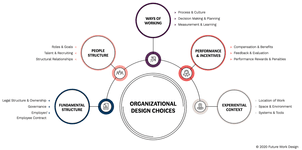
Organizational Innovation Through Design

There are a lot of approaches to organization design, but none are reliable and construct-valid. It ignores how personhood and work are intertwined. In addition, the organization isn't a self-aware social singularity, so employees are differentiated as futuristic cogs who 'energize' themselves autonomously. A strategy that can only focus on one... See more
Nathan Snyder • The Problem with Organization Design

